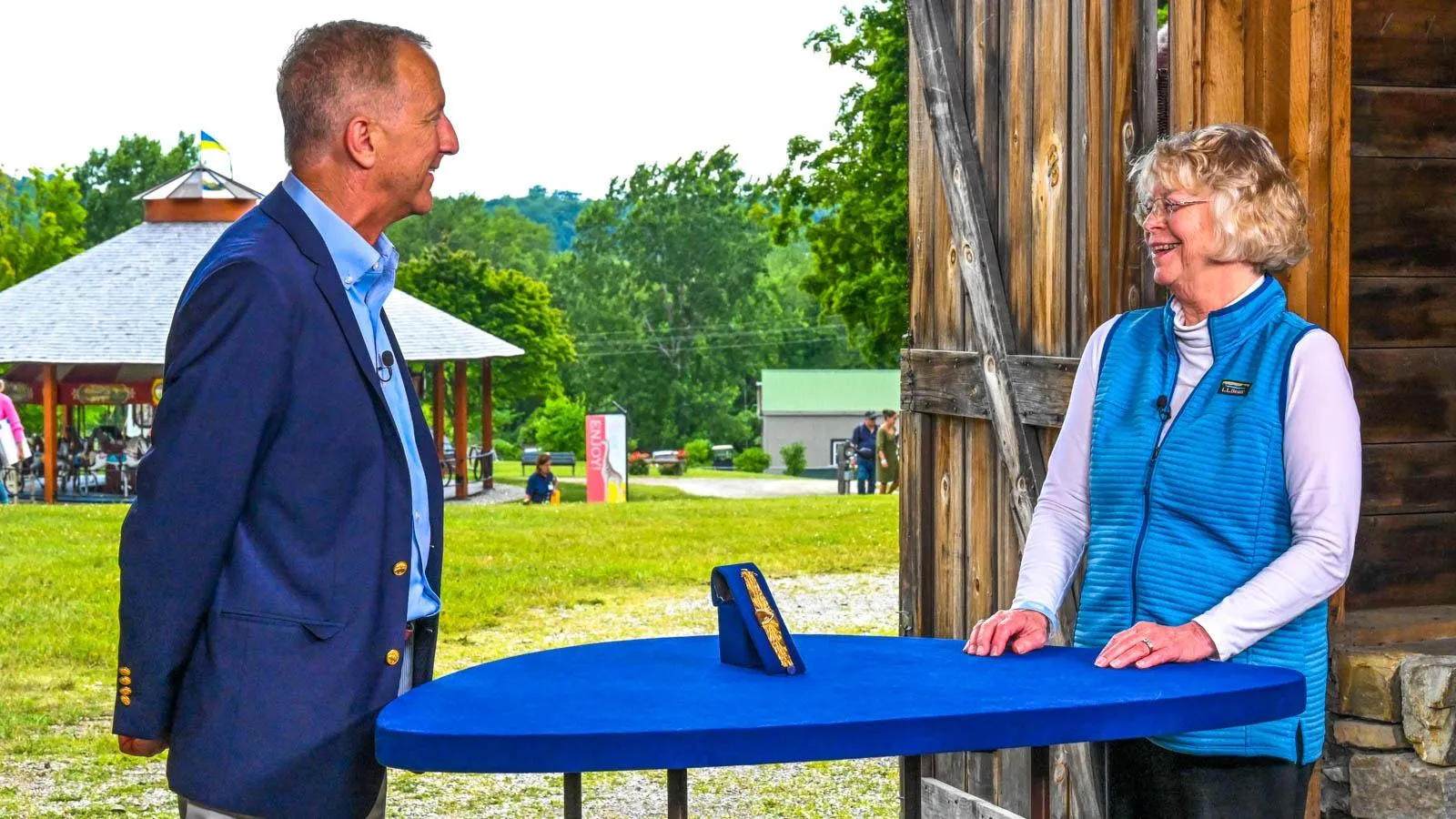GUEST: These were passed down in my family since they were painted, probably sometime in the 1800s. And I recently got them, maybe two years ago, from my grandfather. We were downsizing, and I kind of took over a lot of the, uh, larger family pieces like these, and they're now hanging in our dining room. She was stored in my parents' attic for a little bit, whereas he wasn't. So she's got a little more damage to the frame.
APPRAISER: And what do you know about the pictures?
GUEST: This is my sixth- great-grandfather James Darrach and his wife, Elizabeth Bradford. And, uh, she is the granddaughter of William Bradford, the colonial printer in Philadelphia.
APPRAISER: Fascinating.
GUEST: There was some familial connections that I'd heard that they lived near the Peale family. And the family lore has always been that these were painted by Charles Willson Peale. Sometime in the 1920s, I believe, they had been appraised, but nothing came of it because they couldn't really prove that one was Charles Willson Peale or not. So it was tough for them to really make a determination.
APPRAISER: So, so the, so the appraisal... That's a long time ago.
GUEST: Yeah. (chuckles)
APPRAISER: And then you said they were cleaned and relined, I notice, in the 1960s. Yep. I looked at them with a black light, and they're in remarkably good condition. So, I think they were relined as a means of preserving them. We believe the pictures were painted sometime, I think, in the early 1820s. And they do appear, as far as I can tell, to be in the original frames. I think they're painted with great sensitivity. The quality of the work is rather extraordinary. Hands are extremely hard to paint, and these are beautifully painted. The detail in his collar and the ruffled area. She has very beautiful eyes, and the delicacy that's shown in the painting of the lace and her dress and the skin tones, all of these things are very difficult to achieve successfully. It's difficult, the attribution to Charles Willson Peale. These require further scholarship and research, and there's a lot of it out there. Charles Willson Peale was one of the most renowned and accomplished painters in the city of Philadelphia. And, uh, many of his pictures are of people who were significant participants in the years of the Revolutionary War. There were a number... (clears throat) ...obviously, Peale family artists, and there were a number of other artists working in Philadelphia at that time, people with great talent. As a matter of, uh, their being very high-quality pictures and, I think, particularly well painted, I think they really are quite valuable. What were they, what were they they appraised for in 1920, do you remember?
GUEST: I want to say they were around $7,000. I think that's what one of my family members had paid for them, within the family.
APPRAISER: The market for portraiture in general seems to be a little bit soft, but there are exceptions. And I would say to you that these, in my opinion, would be an exception. So I think at this point, I'm comfortable saying, we'll say the school of Charles Willson Peale. And as such, um, I would estimate the value of the pair of pictures, for auction, perhaps between $30,000 and $50,000.
GUEST: Wow.
APPRAISER: I think all in all, they're in extraordinary condition and true treasures.
GUEST: Thank you, yeah, it's great to hear.













